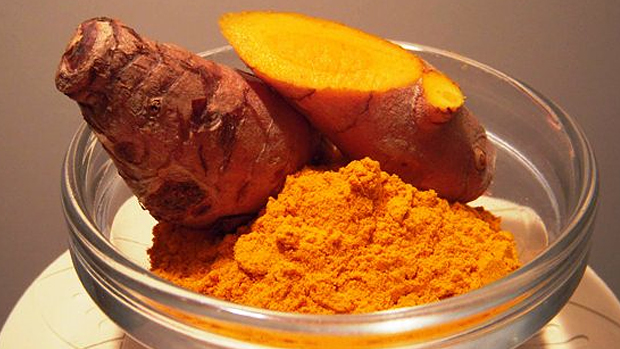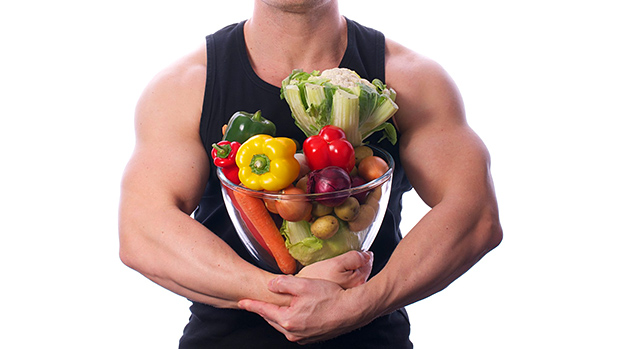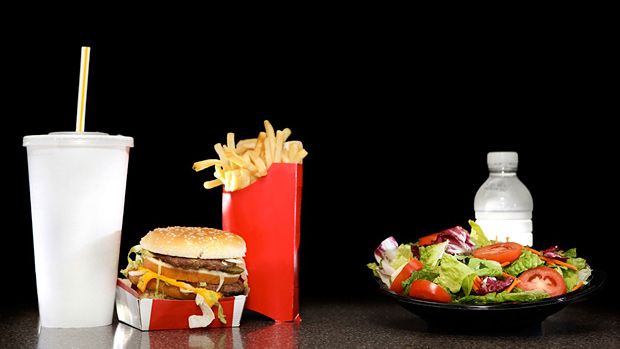A noted nutrition guru shoulders the glycemic load, stands up for fiber, and zaps some myths about zits.
What a Load!
Q: I read that the glycemic index is overrated and that what we should really be paying attention to is glycemic load. What's the difference?
A: The glycemic index is overrated. You should be paying attention to glycemic load. There's a big difference. Here's the scoop:
Glycemic index is a way of measuring the impact a given amount of carbohydrate has on your blood sugar, something you definitely want to know. But to do a fair comparison, they have to use a fixed amount. In the case of the glycemic index, it's a standard 50 grams of carbohydrate.
Problem is, very few carbohydrate foods in real life are 50-gram portions.
See, if you go to a store to buy spices and there's a spice that's $500 a pound, that sure sounds like a lot of money. But if you're only buying a half-teaspoon of the stuff, it's pretty irrelevant. You want to know what you're going to pay at the register, not necessarily what you'd pay if you bought a pound.
Similarly, you really don't care what the impact of 50 grams is on your blood sugar; you care what the impact of the amount you're actually eating is.
Glycemic load is a more sophisticated formula that takes into account the actual grams of carbs you're eating -- the portion size. The glycemic index of carrots is high, leading a lot of people to think you should never eat carrots, which is a dumb conclusion. Fact is, the average carrot has 3 grams of carbs. You'd have to eat like a giant rabbit to have a significant impact on your blood sugar.
The glycemic load of a carrot, on the other hand, is only 3, making it an extremely low-glycemic food -- unless you're drinking pure carrot juice or eating 13 carrots at a sitting.
Pasta, on the other hand, has a moderate glycemic index, but is almost never eaten in 50-gram portions. Factor in the portion size at a typical Olive Garden and your blood sugar will be on the roof, and stay there for a week. Not surprisingly, the glycemic load of pasta is very high.
The technical formula for glycemic load is GI (glycemic index), multiplied by the number of grams of carbohydrates in the portion, then divided by 100. Low glycemic load is between 1 and 10, medium is between 10 and 20, and anything over 20 is very high.
That said, remember that both glycemic index and glycemic load only refer to the food eaten alone. Add some fat or protein and the total impact goes down. And plenty of high-glycemic foods are good for you (say, carrot juice) while plenty of low-glycemic foods (fried donut holes) are not.
So take glycemic load into account, but don't be a slave to it. It's just one measurement to consider when planning a diet.
Incidentally, athletes in training actually can benefit from high-glycemic foods, especially when they're training twice a day. Mrs. Smith with Metabolic Syndrome... not so much!
The Best Fat-Loss "Supplement"
Q: You wrote once that fiber is the best "supplement" for fat loss. What do you mean? And how much fiber does the average athletic dude need per day?
A: High levels of blood sugar and insulin are the enemy of fat loss, and high fiber diets help keep blood sugar (and insulin) in a healthy range. The more fiber, the less glycemic impact. The slower the sugar hits your bloodstream, the less damage it's likely to cause.
Fiber also keeps you full longer and therefore makes you less likely to eat like a pig. And because it keeps blood sugar in a nice comfortable zone, it's less likely to lead to cravings for fried Twinkies at midnight.
Then there's the additional fact that fiber is found in foods that tend to be high in antioxidants and anti-inflammatories.
As great as protein and fat can be, both have zero fiber.
Nearly all of us – athletes included – need more fiber than we're typically getting. Our Paleolithic ancestors, a good model population for the ideal diet, ate between 50 and 100 grams of the stuff a day. The average American gets between 4 and 11 grams.
I usually don't agree with conventional establishment health organizations on dietary advice, but in this case most of them get it right. The National Institute of Medicine recommends between 25 and 38 grams a day, with an even higher recommended intake for "active" people. For example, active males between the ages of 14 and 50 should get between 42 and 45 grams a day.
Unless you're eating a shitload of vegetables and beans, this probably means you could benefit from fiber supplements like cellulose fiber, psyllium husks, or a product like Barlean's Forti-Flax.
Just remember that if you're upping your fiber intake, make sure to drink more water. If you don't, you'd better get used to constipation.
Turmeric: The Super Spice
Q: You wrote in your 150 Healthiest Foods on Earth book that turmeric, the spice, deserved to have a whole book written on it. What's so great about this stuff, besides the fact that it makes Indian food taste good?
A: The active ingredient in turmeric is curcumin, a member of a class of plant chemicals called curcuminoids. Curcumin has anti-cancer properties. Even the very conservative American Cancer Society says on its website that curcumin has "demonstrated some anti-cancer effects."
Several types of cancer cells are inhibited by curcumin in the lab, and it's slowed the spread of cancer in some animal studies. It's also a powerful antioxidant and highly anti-inflammatory as well, and since inflammation is a component of virtually every degenerative disease on the planet, that's a very powerful résumé.
And if that weren't enough, curcumin (or turmeric) is one of the most liver-friendly compounds on the planet, which is why you almost always see curcumin in liver-detox supplements.
The Best Oils
Q: We all know that extra-virgin olive oil is good stuff, and after reading your interview here on T-Nation, I've started to use coconut oil too. What other oils do you recommend?
A: Well I'm glad you're starting to use coconut oil, which I think is one of the most underrated oils around. I go through about a jar of Barlean's Organic Coconut Oil every month. Okay, I exaggerate. But I use it for everything from stir-frying vegetables and shrimp to scrambled eggs.
Despite having written a cookbook (The Healthiest Meals on Earth), I'm not that much of a cook, but I can tell you that for high-heat cooking, the best oils are macadamia nut oil – which is even higher in oleic acid than olive oil (Mac Nut Oil is a particularly good brand) – avocado oil, and hazelnut oil.
Heating extra virgin olive oil to a high temperature -- where it smokes -- isn't a good idea. It destroys the delicate compounds that the cold pressing preserves, so what's the point?
Peanut oil has a high smoke point, which is good from a cooking point of view, but is very high in omega-6 fats. Omega-6s aren't necessarily a bad thing, but we get way too many of them and not enough omega-3s, so if peanut oil is your main cooking oil you're going to be adding to the imbalance.
Zap Your Zits
Q: I still have acne, even in my late 20s. For years I heard that what you eat doesn't affect acne. Is that true?
A: Yeah it's about as true as the idea that you can't get pregnant if it's your first time.
The idea that diet has nothing to do with acne is an old wives' tale that first gained traction due to some really shady studies funded by the chocolate industry back in 1969. It's bullshit.
I talk about some of the causes of acne in my book, The Most Effective Cures on Earth, where I discuss it in more detail, but the bottom line is that only a tiny percentage of people in hunter-gatherer and rural societies have acne, and a big percentage of those eating a Western diet do.
And in 2002, Loren Cordain, PhD, put the nail in the "no connection between diet and acne" coffin with a study showing not a single case of acne in two non-westernized populations his research team studied. These guys ate tubers, fruit, fish, and coconut.
In other words, the best diet for acne is the Paleolithic diet of our hunter-gatherer ancestors, food from what I like to call the four food groups: food you could fish, hunt, gather, or pluck.
For a really well-researched, well-argued point of view about diet and acne (and how to cure it), check out Cordain's The Dietary Cure for Acne, available as an online download.
Bottom line: The Western diet with all its sugar and starch and white crap carbs may turn on the same genes and upregulate the same hormones that aggravate acne. You can test this for yourself quite easily: If your food doesn't resemble something you could have come across on the savannah in Africa, don't eat it.
The Truth About Potatoes
Q: What's the deal with white potatoes? Is this really a healthy vegetable? Are sweet potatoes better?
A: White potatoes are crapola.
I had this argument with Dr. John McDougall of vegetarian-diet fame, and I told him that the body "sees" a bolus of white potatoes exactly as it "sees" a big gob of sugar. He argued that was nonsense, and I argued that he needs to go back to biochemistry class.
Now to be fair, of course white potatoes can be "part of an overall healthy diet," as those idiots at the American Dietetic Association would say. But they'd say that about M&Ms too.
And of course they're better than Twinkies, and of course they have some minor amounts of good stuff. But for the most part, they're nutrition lightweights, and anyone who has blood sugar issues should stay away from them. The fact that they're typically served loaded up with all kinds of crappy "cheese products" and fake bacon bits doesn't exactly improve things.
Sweet potatoes are definitely a better choice. At least they've got nutrients. Of course, they're not too much better from a blood sugar standpoint, but this may not be a concern for everyone, especially bodybuilders. If it is, you're better off passing, or at least really cutting back on portion size.
Nighttime Eating
Q: For fat loss, do you go for the idea to stop eating at a certain time of the day? I've read where some people don't eat past 5 p.m., others past 8 p.m. Is eating before bed a bad thing when your goal is fat loss?
A: Adele Davis, one of the early pioneers of nutrition and one of the first to support the use of nutritional supplements, had a saying: "Eat breakfast like a king, lunch like a prince, and dinner like a pauper."
Which, you might observe, is the exact opposite of how most people eat.
While those Neanderthals in the American Dietetic Association claim it doesn't make any difference when you eat, it's worth noting that sumo wrestlers eat a huge meal and then go to sleep. While I don't think there's anything magic about the exact time (5 P.M, 7 P.M., 9 P.M.), the concept of not going to bed on a full stomach while your pancreas floods your system with fat-storing insulin just in time for beddy-bye is a particularly terrific idea.
Rather than be too obsessive about the time, just let a few hours go by between your last meal and bedtime. And eat lightly at night.
The Perfect Snack
Q: I need a TV-watching snack idea that uses some of your healthiest foods on earth. Any ideas?
A: Frozen blueberries with a little full-fat yogurt or raw milk (if you can find it). The raw milk or yogurt semi-freezes over the blueberries and you've got a fantastic, memory-boosting, antioxidant-rich "dessert" that tastes like sherbet. Sprinkle with slivered almonds and have a ball.
The Irradiation Debate
Q: What's your take on the food-irradiation issue?
A: I'm still developing my opinion. If you promise not to come back and haunt me with something I say today before I've studied it more, I'll tell you my off-the-cuff impressions.
- It's way more complicated than it seems on the face of it. Economic, political, and social issues are all involved, not just the obvious nutritional and health ones. (Just for starters, it impacts trade.)
- Irradiation does destroy a whole bunch of food-borne pathogens. But it's like putting perfume on crap. You get rid of some of the microbes, but do nothing about the awful conditions that produce them, like fecal mater, pus, and other contaminants in feedlot farms.
- And irradiated meat – though it may be "safe" from certain pathogens – is still the same hideous, crappy product with steroids, hormones, antibiotics and the like from the same horrendous feedlot farms. It just doesn't have e coli on it. Yay.
- Then of course there are the unknowns. I'm not sure it's as dangerous as the alarmists are saying, but I'm pretty sure it's not as "benevolent" as the FDA says. The truth is probably somewhere in the middle, and until we know it, or at least more of it, I wish we could just hold off with the whole thing.





